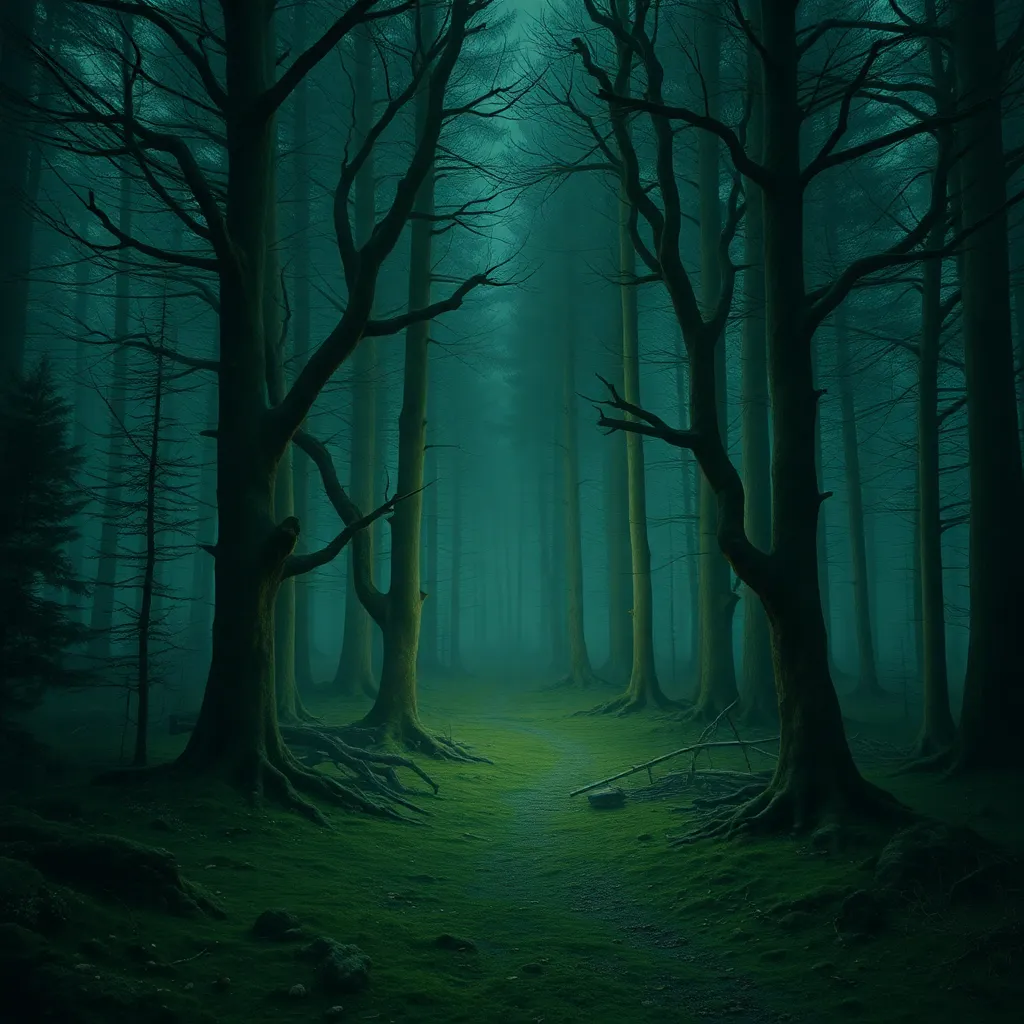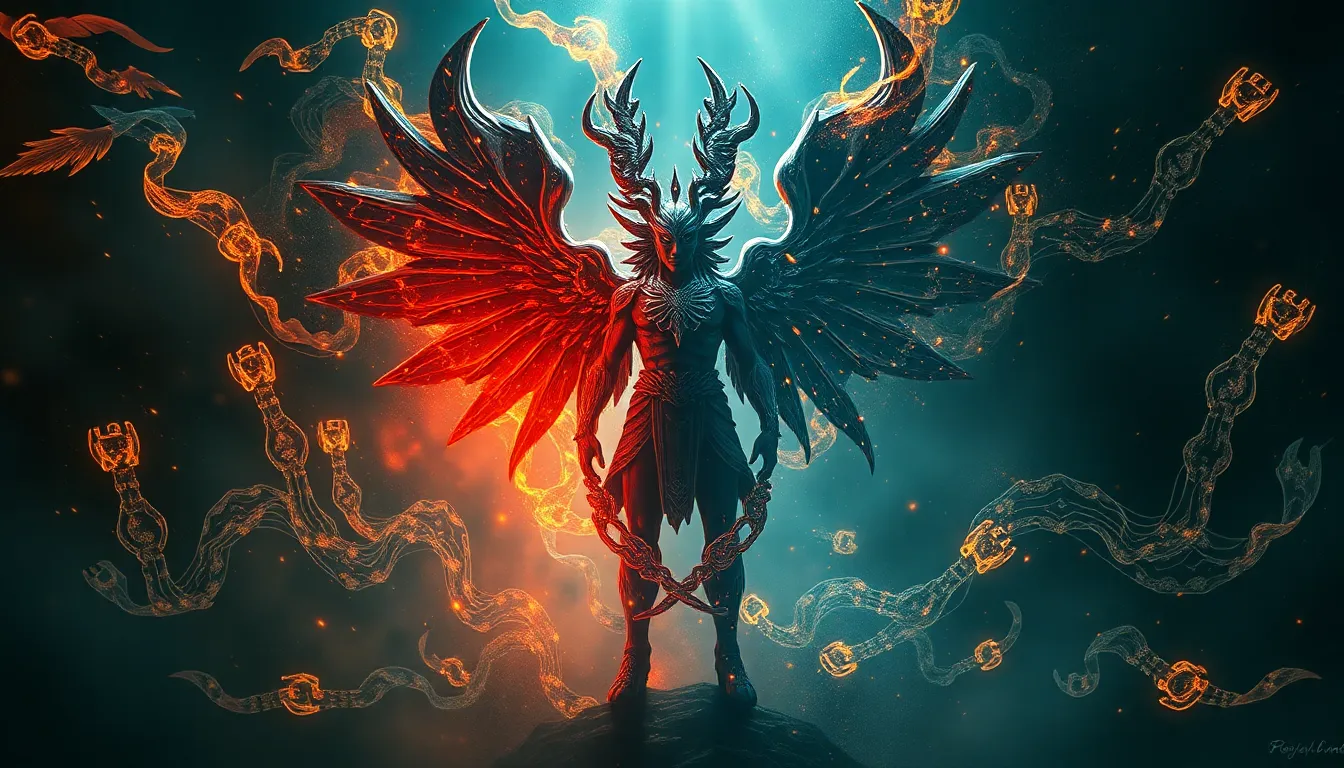The Enchanting Huldra: Unraveling Norwegian Forest Lore
I. Introduction to the Huldra
The Huldra is a captivating figure in Norwegian folklore, often described as a beautiful woman who dwells in the forests. With her enchanting allure, she has captured the imaginations of many for centuries. The Huldra is characterized by her long, flowing hair and striking appearance, but her most distinctive feature is a cow’s tail, setting her apart from mere mortals.
In Norwegian folklore, the Huldra symbolizes the mysteries of nature and the delicate balance between beauty and danger. She has often been portrayed as a guardian of the forests, embodying the spirit of nature itself. This article aims to explore the origins, physical characteristics, and cultural significance of the Huldra, shedding light on her role in both ancient and modern narratives.
II. The Origins of Huldra Mythology
The Huldra’s origins can be traced back to ancient Nordic culture, where she was revered as a vital figure in the pantheon of nature spirits. Historical texts suggest that the concept of the Huldra may have emerged from a blend of pagan beliefs and the later influence of Christianity, which sought to explain the unexplainable aspects of the natural world.
Over time, the Huldra legend has evolved, influenced by changes in society, culture, and the environment. Various regions in Norway have their interpretations of the Huldra, resulting in rich and diverse storytelling traditions. For instance:
- In the mountains, she is often depicted as a benevolent protector of livestock.
- In coastal areas, she may be associated with the sea and its mysteries.
III. Physical Characteristics of the Huldra
The Huldra’s appearance is one of her most striking features. She is typically portrayed as an incredibly beautiful woman, often wearing a long, flowing dress that blends seamlessly with her surroundings. However, her beauty is contrasted by a cow’s tail, which she hides from human eyes. This tail serves as a symbol of her connection to nature and her otherworldly origins.
The duality of the Huldra’s appearance highlights the themes of allure and peril. She embodies the idea that beauty can be deceptive, and those who are lured into her domain may find themselves enchanted but also in danger. Thus, her character serves as a cautionary tale about the unseen dangers within the natural world.
IV. The Huldra’s Role in Nature and Ecosystems
Within the realm of Norwegian folklore, the Huldra is often seen as a guardian of the forests. She is believed to protect the wildlife and maintain the balance of the ecosystem. Her presence is felt in the rustling of leaves and the sounds of the forest, and she is often associated with natural phenomena such as storms and the changing of seasons.
In stories, the Huldra has various relationships with other forest creatures, often depicted as a nurturing figure. She may help lost travelers find their way or guide them in times of need. Her symbiotic relationship with nature illustrates the interconnectedness of all living beings.
V. Encounters with the Huldra: Tales and Folktales
Stories of encounters with the Huldra are common in Norwegian folklore. These tales often revolve around themes of seduction, danger, and the consequences of straying too far into the wild. Notable stories include:
- A farmer who encounters a Huldra while tending his cattle, leading to a brief romance that teaches him the importance of respecting nature.
- A hunter who is lured into the forest by a beautiful woman, only to discover her true nature as a Huldra.
In modern times, the Huldra has been reimagined in various forms of media, from literature to film, continuing to captivate audiences with her enigmatic charm.
VI. The Huldra in Art and Literature
The Huldra has inspired countless artists and writers throughout the years. In visual arts, she is often depicted in ethereal landscapes, surrounded by the natural beauty of the Norwegian wilderness. Her imagery evokes a sense of mystery and wonder, reflecting her connection to the forest.
In contemporary literature, the Huldra appears in various genres, from fantasy to children’s books, often representing themes of environmental consciousness and respect for nature. Her character serves as a bridge between the past and the present, illustrating the enduring power of folklore in modern storytelling.
VII. The Huldra’s Cultural Impact and Modern Interpretations
The Huldra remains a significant figure in contemporary Norwegian identity. She is celebrated in various festivals and events across Norway, where her story is honored and retold. These celebrations often include music, dance, and storytelling, fostering a sense of community and connection to cultural heritage.
Moreover, the Huldra has become a symbol of environmental awareness, representing the need to protect natural landscapes and the ecosystems within them. Her legend encourages respect for nature and highlights the importance of preserving the beauty of the forests for future generations.
VIII. Conclusion: The Lasting Legacy of the Huldra
The Huldra’s significance in Norwegian folklore is profound, serving as a reminder of the beauty and danger inherent in nature. Her stories reflect the complex relationship between humanity and the environment, emphasizing the need for respect and understanding.
As we navigate modern challenges, the enduring appeal of the Huldra invites us to reconnect with the natural world and honor the traditions that have shaped our cultural identity. The Huldra, with her enchanting presence, continues to inspire us to explore the mysteries of the forests and appreciate the delicate balance of life that exists within them.




